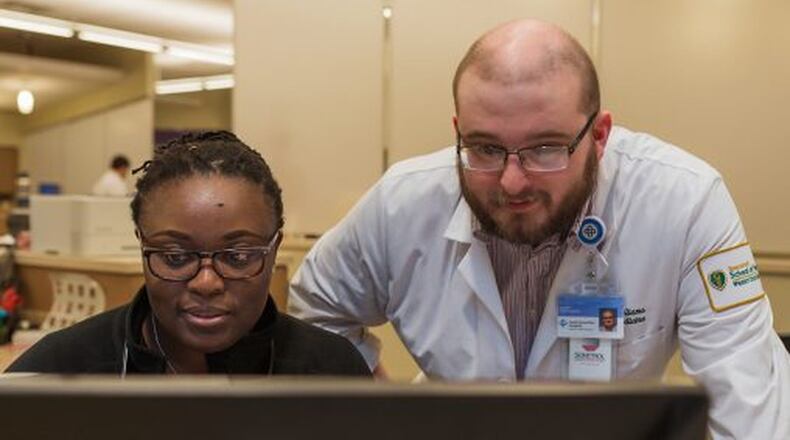MORE: What’s next for Phoenix Next vision at Good Sam site
Dr. Teresa Zryd, who is in charge of all the medical residency programs, said in the future they will have to think about how many positions they need, such as whether they still need as many emergency medical residents when they have one fewer emergency department in the system.
“We can’t forget that not only are we training residents, we have several hundred medical students that are following around with the residents,” said Zyrd, who completed her residency at Good Samaritan. “So we’ve got to figure out an appropriate mix of both the medical students and the residents so that the patient gets the quality care they need while we’re doing the quality education we need to do for both of those groups.”
There were 66 residents based out of Good Samaritan and 62 of those salaries were financed with the help of Medicare, which only pays for a certain cap of residency positions at each hospital.
When Good Samaritan closed, all those residents transferred to Miami Valley Hospital. However, Premier Health had to start getting permission from Medicare to have those residency slots transferred to Miami Valley Hospital. Premier applied for those slots, but any hospital in the nation can apply for them .
MORE: Nurse practitioners surge in Dayton area
These medical residency spots are important since the residents perform important work at the hospitals, and because many doctors now in practice in Dayton first came to the area through a local residency program. It also impacts the recruitment of experienced doctors, since attending physicians are often looking to work at places where they can teach medical residents.
The priority is to keep family medicine program intact, Zyrd said.
“We recognize that our pipeline for primary care was extremely important to us, and we made sure that was not affected,” she said.
On Jan. 22, Medicare posted the decision to award 49 of the 62 medical resident positions online.
The loss of those 13 medical resident slots is the equivalent of roughly $1 million in lost Medicare funds. Zyrd said while they lost those funds, there’s also benefit to having medical residents working and providing services, which someone offsets that loss. The hospital every year has medical residents working above and beyond that subsidized cap.
“And we do pride ourselves on being a great educational source,” Zyrd said.
Sometimes when a teaching hospital closes, those resident physicians have to scramble to get another placement at another health network, such as last year when Hahnemann University Hospital in Philadelphia closed and left 574 medical residents and fellows in the works.
Before the change, Miami Valley Hospital also had a Medicare cap of 94 medical residents.
Good Samaritan Hospital had operated at the corner of Philadelphia Drive and Salem Avenue until 2018, when Premier Health closed the main campus. About 1,600 people were employed at the main campus at the time and all of those employees were offered positions to move to other parts of Premier.
Premier Health also operates Miami Valley Hospital, Miami Valley Hospital North (formerly Good Samaritan North), Miami Valley Hospital South, Upper Valley Medical Center and Atrium Medical Center, as well as a network of employed physicians and other outpatient services.
About the Author
